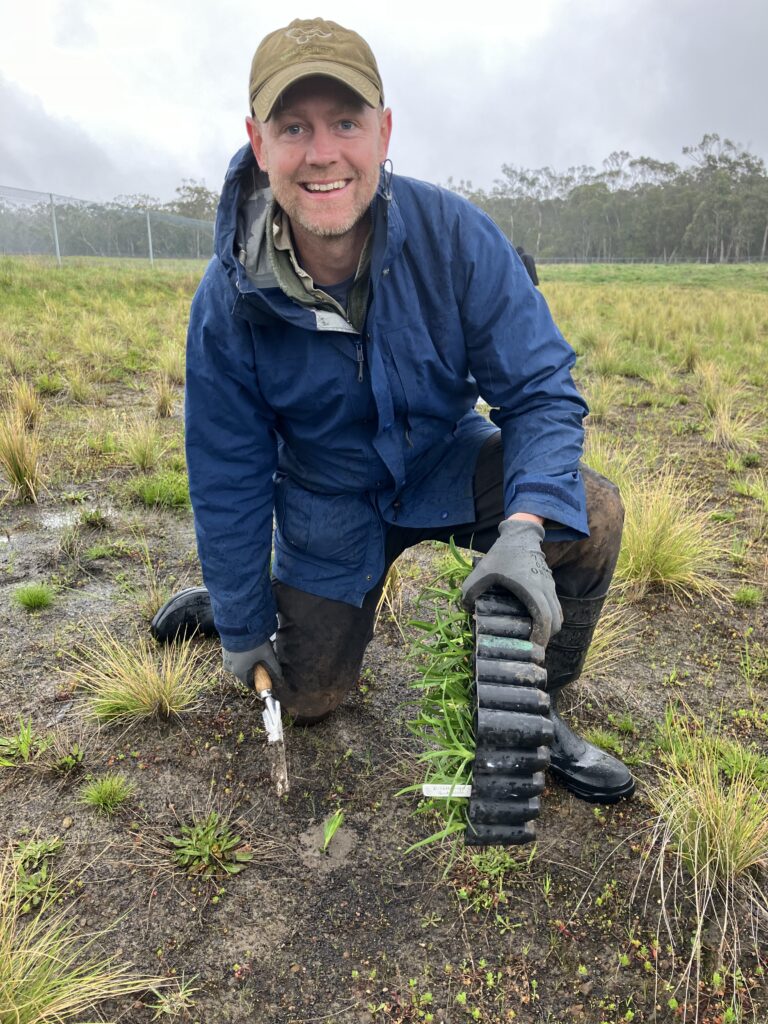Saving the threatened species on the VVP
Budget: $455,000
Funding: Victorian Government through the Nature Fund
Project partners: David Franklin’s Grassland Nursery and the Woorndoo-Chatsworth Landcare Group
Over the past decade, CMAs on the Victorian Volcanic Plain have been running programs to support landholders in the management and conservation of critically endangered grasslands.
These programs have focused on controlling pest plants and animals, as well as modifying the disturbance regime to increase plant diversity. Disturbance modification has occurred through shorter periods of stock grazing, and increasingly, through the re-introduction of burning to replicate the management of roadside grasslands where diversity is typically much higher.
However, limitations to this disturbance switching approach has led the Glenelg Hopkins CMA to couple the landholder stewardships program with the addition of seed from 17 plants rarely found on private land.
The 17 target species are all threatened, so to limit the pressure of wild seed collection on remnant populations, Glenelg Hopkins CMA is establishing a threatened species seed production area through funding from the the Victorian Government’s Nature Fund.
Establishing both a seed production area, and new populations of threatened species grassland communities on previous and new landholder grassland stewardship sites, further diversifies the spread of the plant species, as well as returning previously established plants to the grasslands of the VVP.



What are the aims of the project?
Over three years, the project will establish a sustainable seed source for threatened plants and establish 39 new threatened plant populations.
The establishment of the Seed Production Area (SPA) will reduce the need for wild seed collection in the future, reducing the burden on small and vulnerable plant populations
The SPA will provide seed to others looking to undertake grassland restoration projects, increasing access to rare plants and ultimately increasing the number of populations in the wild.
What are the 17 species?

Collecting the wild seed
Since 2023, Glenelg Hopkins CMA staff have been searching the landscape for target populations to collect seed from target species.
These species are generally rare and can be difficult to locate and identify, even when population locations are known however, over the first 12 months of the project, a number of plant species have had seed collected.
Seed development will be monitored over spring/summer, as several species are difficult to propagate, for some species cuttings will also be attempted.

Establishing a Seed Production Area (SPA)

The Woorndoo-Chatsworth Landcare Group currently have a small SPA located at David Franklins Grassland nursery, providing seed for small scale grassland restoration.
This project will substantially expand the existing SPA throughout 2024 to include the 17 target species with seed collected by CMA staff. This will enable the project to utilise existing SPA facilities and the expertise of practitioners and researchers in grassland flora production
Plants will be grown and managed in optimal conditions to maximise seed production.
Introducing new populations to the landscape
In 2025, seed harvested from the SPA will be used to establish a target of 39 new threatened plant populations, focusing on 12 species.
For 5 of the 17 target species, establishment in the SPA only is the focus due to uncertainty and difficulty in propagation
Locations for new populations will include private land grassland remnants, grassland revegetation sites and grassland reserves. Sites established on private land will be supported through a stewardship program to optimise management, and establishment success will be monitored.







